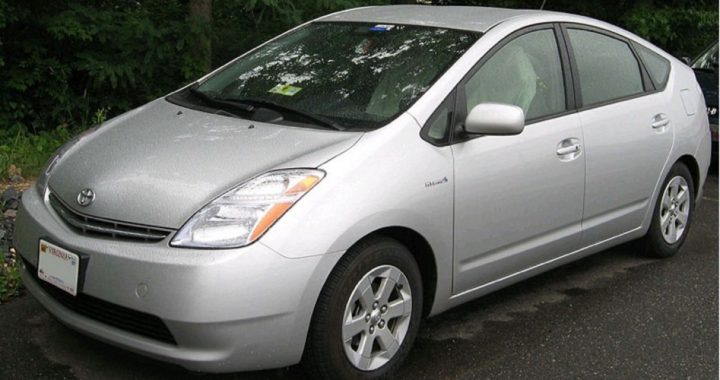
Tuesday’s announcement from Edmunds.com, the car-shopping website, that twice as many EV (electric and hybrid) owners are trading in their cars for gas-guzzling SUVs as they were just two years ago shouldn’t have caught anyone by surprise. The math never really made sense, and with gas prices half what they were two years ago, reality is neutering the “cachet” of owning an “environmentally friendly” automobile.
When gas was $4.67 a gallon in October 2012 it would take five years of gasoline savings to make up the difference between a Toyota Camry LE Hybrid ($28,230) and a Toyota Camry LE ($24,460). But with gas prices half that, it now takes more than 10 years to break even.
Not only is market reality disrupting and removing the “cachet,” it is also exposing the folly of government tinkering with subsidies and propaganda to make EVs competitive with internal combustion vehicles. In his 2011 State of the Union address, President Obama expressed his faith in government as the solution to all problems by predicting that “with more [federally subsidized] research and incentives [tax credits], we can break our dependence on oil … and become the first country to have a million electric vehicles on the road by 2015.”
His prediction, based on numbers from the Department of Energy (DOE), forecast the General Motors Chevrolet Volt would sell 375,000 vehicles by the end of 2014, and the Nissan Leaf EV 300,000 vehicles. Real world numbers illustrate clearly the size of that dreamland fantasy, conjured by believers in government subsidies. Through December 2014, total Volt sales came to just 71,867, while the Leaf’s total came in under 70,000.
Comparing the DOE’s dream to hard reality, the million-vehicle goal was missed by 826,000.
When it was clear in January 2013 that Obama’s goal wouldn’t be met, there was no heart change in Washington, just a moving of the goal posts. Putting the best face that he could on reality, Energy Secretary Steven Chu said: “Whether we meet that goal in 2015 or 2016, that’s less important than that we’re on the right path to get many millions of these vehicles on the road” — no matter the amount of taxpayers’ monies wasted in the process.
So far more than $8 billion of taxpayer dollars have been invested in failed ventures, federal tax credits, and experiments in making EVs more competitive with internal combustion vehicles, with little to show for it. One company, Fisker, was supposed to sell 230,000 EVs by the end of 2014. It never came close. Before suspending production in November 2012, it produced just 2,450 vehicles. It declared bankruptcy a year later, taking with it an estimated $200 million of those taxpayer funds.
But government spending will continue, according to the Congressional Budget Office, noting that $2.4 billion has already been granted to lithium-ion battery makers along with $3.2 billion in loans to auto companies like Fisker.
The market reality is clear. As the flood of used EVs enters the used-car market, prices for new EVs will have to be cut substantially in order to sell enough of them to meet federal government gas mileage mandates. Despite federal tax credits, those new EVs are already experiencing depreciation that exceeds the normal depreciation rate (estimated by some to be as much as 35 percent in the first two years) by another 10 to 15 percent.
Physics is compounding the EVs’ drawbacks to undo Democratic dreams. As Mark Mills incisively noted in Real Clear Politics last year, “Batteries are not good at storing energy compared to a steel gasoline tank,” adding:
Pound for pound … the chemicals that comprise gasoline store 40 times more energy than the best chemicals in batteries. Gasoline is not only more dense but also remarkably safe, easy to store, and portable.
Ask a chemist: if you started with a blank slate to design a near-ideal way to store energy for a mobile platform, you’d invent the oil molecule.
Here again is the real world: A Tesla battery pack, including the motor, weighs more than 1,500 pounds. A Mustang’s fuel tank full of gas, including its motor, weighs just over 500 pounds. And the real-world cost to drive the Tesla 200 miles, including amortization of the lithium-ion battery, is about $90. With the Mustang the same trip uses about $15 worth of gasoline. As Mills notes: “Such vast differences can only be disguised with [taxpayer] subsidies.”
As Edmunds.com noted, EVs are declining in market share, while SUVs are increasing: “EVs and hybrids accounted for just 2.7 percent of all new car sales in the first quarter of 2015, down from 3.3 percent during that same period last year. The share of SUVs, meanwhile, has increased from 31.8 percent [in the last quarter of 2014] to 34.2 percent in [the first quarter of 2015].”
The reality of the marketplace, and of elementary physics, has exposed the myth that the government can remake society, including what people drive, into its own perceived perfection. Only now is the myth catching up with reality, exposing the “cachet” for what it is: a dream based on a myth funded by taxpayer dollars.
A graduate of an Ivy League school and a former investment advisor, Bob is a regular contributor to The New American magazine and blogs frequently at www.LightFromTheRight.com, primarily on economics and politics.



